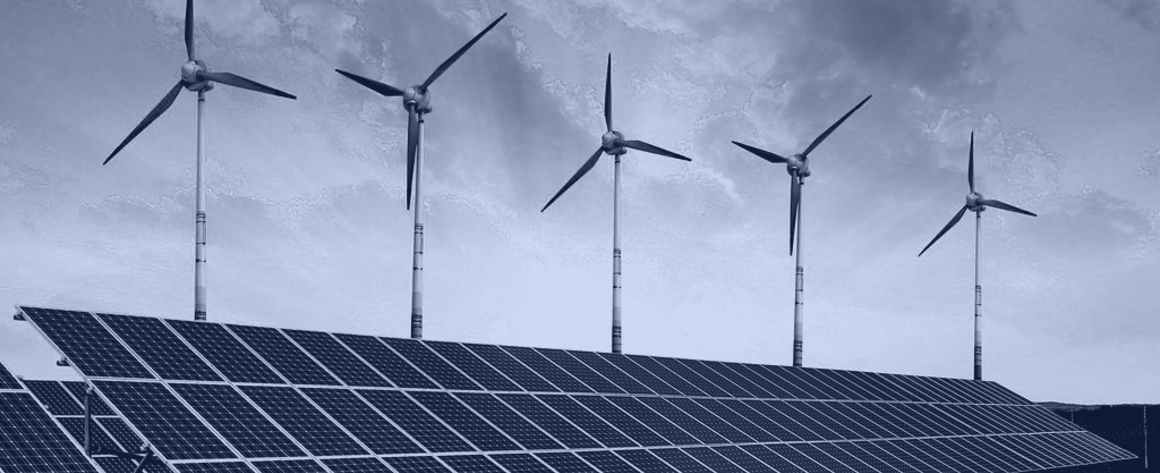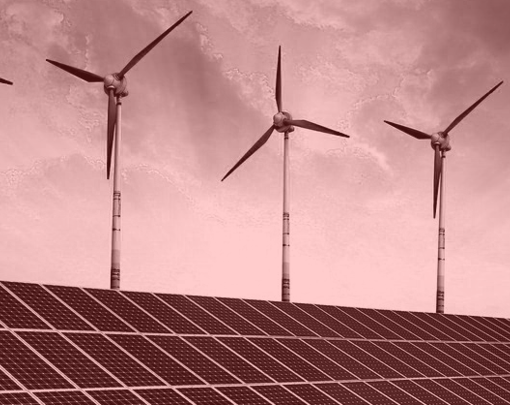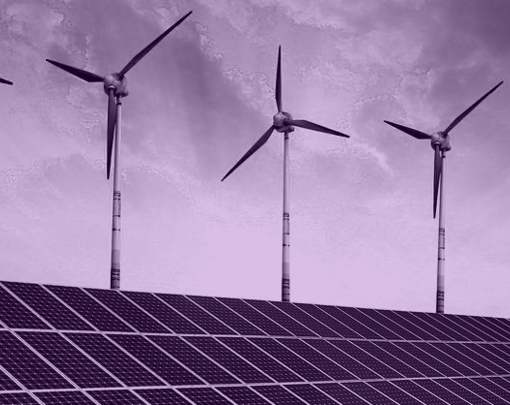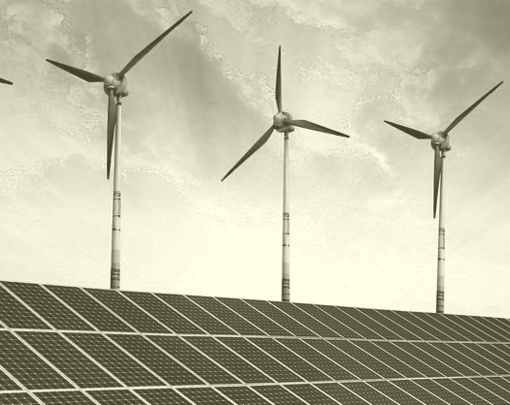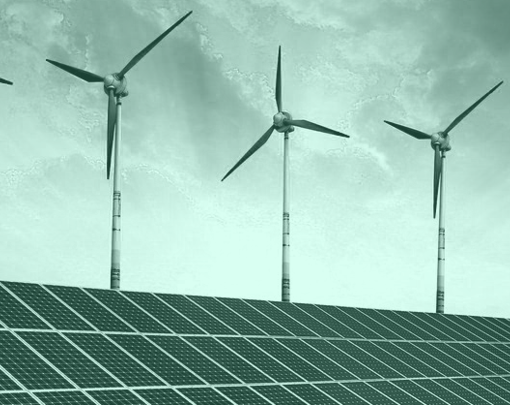Rural electric cooperatives—member-owned electric utilities started during the original New Deal—and many rural municipal utilities run on uneconomical and dirty fossil fuel infrastructure. Rural communities are in large part held back from transitioning to clean energy by federal government debt that helped to finance their old coal and gas plants. The federal government, largely the Rural Utility Service (RUS) could cancel the fossil fuel debt in order to enable early retirement of these dirty energy plants, under the condition that the electric co-ops and rural municipal utilities reinvest directly into a green grid. This could have major implications for rural areas of America. More distributed renewable energy could lower energy costs for low-income rural residents, who have some of the highest energy burdens in the United States. The buildout and ownership of renewable energy on farmland could also provide additional revenues for family farms hurting from climate-related weather events and the squeeze of Big Ag.
History of rural electric cooperatives
In the 1920’s rural American households were left in the dark as for-profit utilities electrified major cities. Considering rural America an uneconomical endeavor to electrify, the utilities refused to put up wires, even as farmers entreated them to do so. Partially to electrify the rural landscape and partially as a large-scale economic development project, in 1935 President Franklin D. Roosevelt started the Rural Electrification Administration (REA) that deployed financing and technical help to farmers and rural households across America to band together and create their own cooperatively owned, nonprofit utilities.1 In a span of 10 years, these co-ops put up more rural electrical lines than private utilities had in the past 50 years and electrified 90% of rural America. Alongside rural municipal utilities that often receive power from the same providers, rural electric cooperatives are the primary providers of power in rural America.
The problem
In the 1960s, the federal government made available low-interest loans to build generation and transmission (G&T) co-ops, essentially co-ops of co-ops that could collectivize their financial power to build facilities (at the time, large and centralized coal plants) and deliver power at economies of scale. During the oil crisis in the 1970s and ‘80s, the federal government particularly incentivized coal power production to limit oil and gas use.2 As of 2019, rural electric cooperatives still generate 40% of their energy from coal and another 51% from gas, largely facilitated by long-term agreements with their G&T to consume energy from these now old and uneconomical power plants.3 Plus, investments that they did make in gas production will likely become stranded assets in the next few years, saddling them with a problem similar to that of their coal investments.4 Similarly, joint action agencies (JAA), the municipal utility equivalent, can have equivalently restrictive contracts that lock municipal utilities into antiquated infrastructure.5
These G&Ts and JAAs hold significant power over the ability for local rural electric co-ops to champion the renewable transition, with many requiring that its co-ops receive at least 95% of their energy from the G&T or JAA. This has even further restrained local co-ops and municipal utilities from reinvesting locally in distributed renewable energy. The result is a combination of a high burden of old coal debt and a contract structure that binds local co-ops to existing fossil fuel investments. According to research by the Center for Rural Affairs, Clean up the River Environment, and We Own It, 53 G&Ts hold $3.4 billion in US Department of Agriculture Rural Electric Service loans and $41.8 billion in loan guarantees, $8.4 billion of which is directly tied to coal infrastructure as of 2010.6
Rural electric cooperatives and rural municipal utilities also serve some of the lowest income areas in the United States. The continued burden of uneconomic coal power plants puts an uneven burden on low-income ratepayers to pay for dirty fuel that hurts their health. At the same time, many rural communities find themselves subjected to large-scale infrastructure to reinvent our grid going through their backyards—from transmission lines to large-scale utility solar. In some places, this has sowed division between rural and urban communities; cities are often able to decarbonize and lower their energy rates using rural land while rural residents are stuck with old, polluting power plants for higher rates because of how G&Ts lock them into an outdated grid system powered by expensive fossil fuels.7
Answer: Debt cancellation and distributed renewables
As was true in the 1930s, rural communities should not be left behind in the energy transition due to the entrenched interests of capital, particularly when the federal government holds a significant amount of the debt holding co-ops and rural munis back from the transition. The federal government has the agency to bring this opportunity to rural America: the Rural Utility Service (RUS), an agency rooted in the historical REA that provides low- to no-interest loans to electric co-ops and rural municipal utilities. RUS holds a significant number of these debts, particularly for cooperatives. The federal government and RUS could simply cancel the debt of rural electric cooperatives and rural municipal utilities associated with fossil fuel investments that they hold. This could be tied to specific and strict requirements for a renewable portfolio standard for all participating rural electric cooperatives to achieve 100% renewable energy by 2030, and a requirement that the G&Ts and joint action agencies eliminate mandates for high amounts of the co-ops’ or municipal utilities’ generation to come from long-term power supply contracts. To date, RUS has started to transition its lending and grants towards renewable energy and a greener grid, but the possibility of RUS and the larger federal government canceling debt and redirecting funding could change the game. As an institution with the power to redirect financial flows for the green economy, RUS should also receive more earmarked funding that expands its ability to do so, aligned with the scale and timeline of our current climate crisis.
This would have huge implications for creating a renewable rural America. The Rocky Mountain Institute found in 2018 that co-ops served by G&T Tri-State could save $600 million between now and 2030 if they were able to transition to renewable energy.8 In addition to dramatically lowering energy costs for low-income rural residents,9 moving towards renewable energy generation offers the added opportunity to stimulate economic growth with newly added energy sector jobs if investments are made within the community. For example, incentivizing distributed ownership of renewable assets could help to diversify farmers’ income sources—a clear benefit when family farms’ crop margins have been eaten away by agribusiness and trade conflicts, and climate change makes the process of growing crops even more precarious.10
This is part of a compilation of policy proposals for energy democracy in a Green New Deal assembled in conjunction with Cooperative Energy Futures and The Democracy Collaborative.
- 1Harold D. Wallace Jr., “Power from the people: rural electrification brought more than lights,” National Museum of American History, February 12, 2016, https://americanhistory.si.edu/blog/rural-electrification
- 2John Farrell, Matt Grimley, & Nick Stumo-Langer, “Re-Membering the electric cooperative,” Institute for Local Self Reliance, March 29, 2016, https://ilsr.org/report-remembering-the-electric-cooperative/
- 3“2019 statistical report,” American Public Power Association, https://www.publicpower.org/system/files/documents/2019-Public-Power-Statistical-Report.pdf
- 4Mark Dyson, “A bridge backward? The risky economics of new natural gas infrastructure in the United States,” Rocky Mountain Institute, September 9, 2019, https://rmi.org/a-bridge-backward-the-risky-economics-of-new-natural-gas-infrastructure-in-the-united-states/
- 5John Farrell, “Local utilities have lost local control,” Institute for Local Self Reliance, June 23, 2016, https://ilsr.org/local-utilities-have-lost-local-control/
- 6“Report shows coal debt slowing US co-ops’ ability to embrace clean energy,” IEEFA, June 24, 2019, http://ieefa.org/report-shows-coal-debt-slowing-u-s-co-ops-ability-to-embrace-clean-energy/
- 7Kayla Bergman, “Coal power debt stifles rural progress,” The Gazette, August 7, 2019, https://www.thegazette.com/subject/opinion/guest-columnist/coal-power-debt-stifles-rural-progress-20190708
- 8Mark Dyson & Alex Engel, “A low-cost energy future for western cooperatives,” Rocky Mountain Institute, 2018, https://rmi.org/press-release/western-electric-co-ops-increasingly-able-to-deliver-savings-by-integrating-renewable-energy/
- 9Lauren Ross, Ariel Drehobl, & Brian Stickles, “The high cost of energy in rural America,” American Council for an Energy Efficient Economy, July 2018, https://aceee.org/sites/default/files/publications/researchreports/u1806.pdf
- 10“Linking renewable energy to rural development,” OECD, accessed January 27, 2020, https://www.oecd.org/regional/regional-policy/Renewable-rural-energy-summary.pdf ; Leah Douglas, “Why 10,000 farmers have gotten behind the Green New Deal,” Grist, September 21, 2019, https://grist.org/article/why-10000-farmers-have-gotten-behind-the-green-new-deal/
